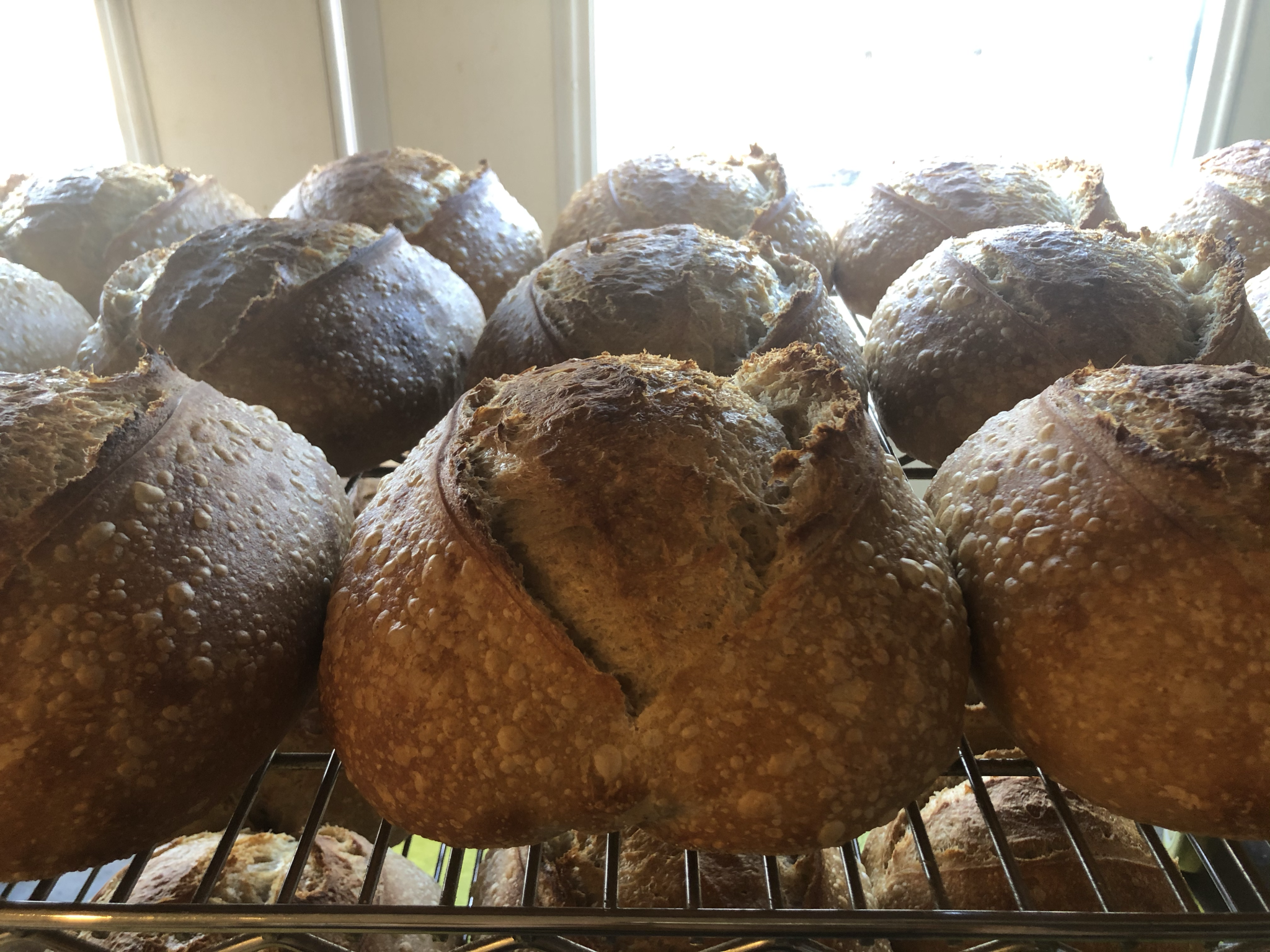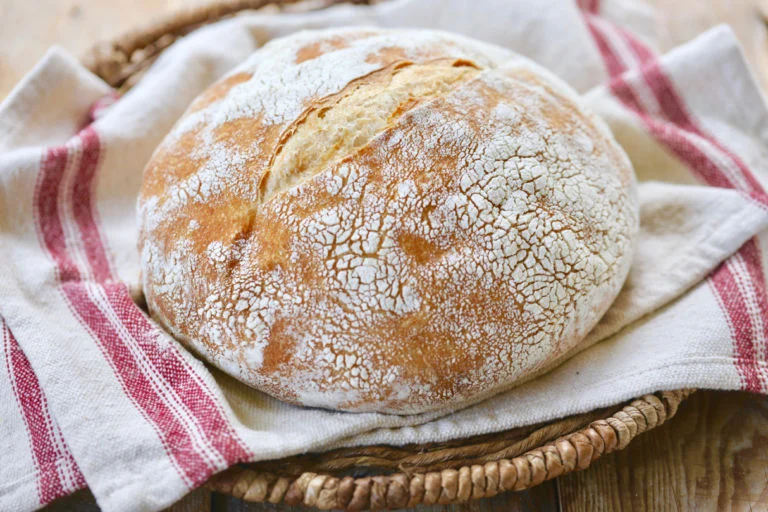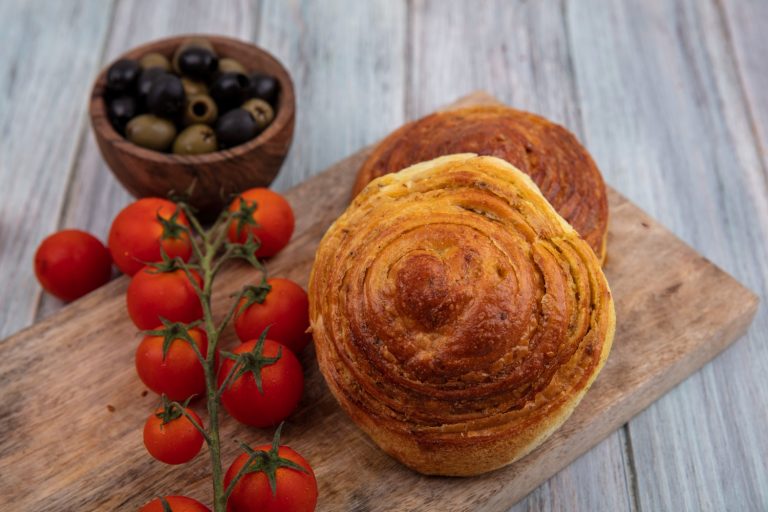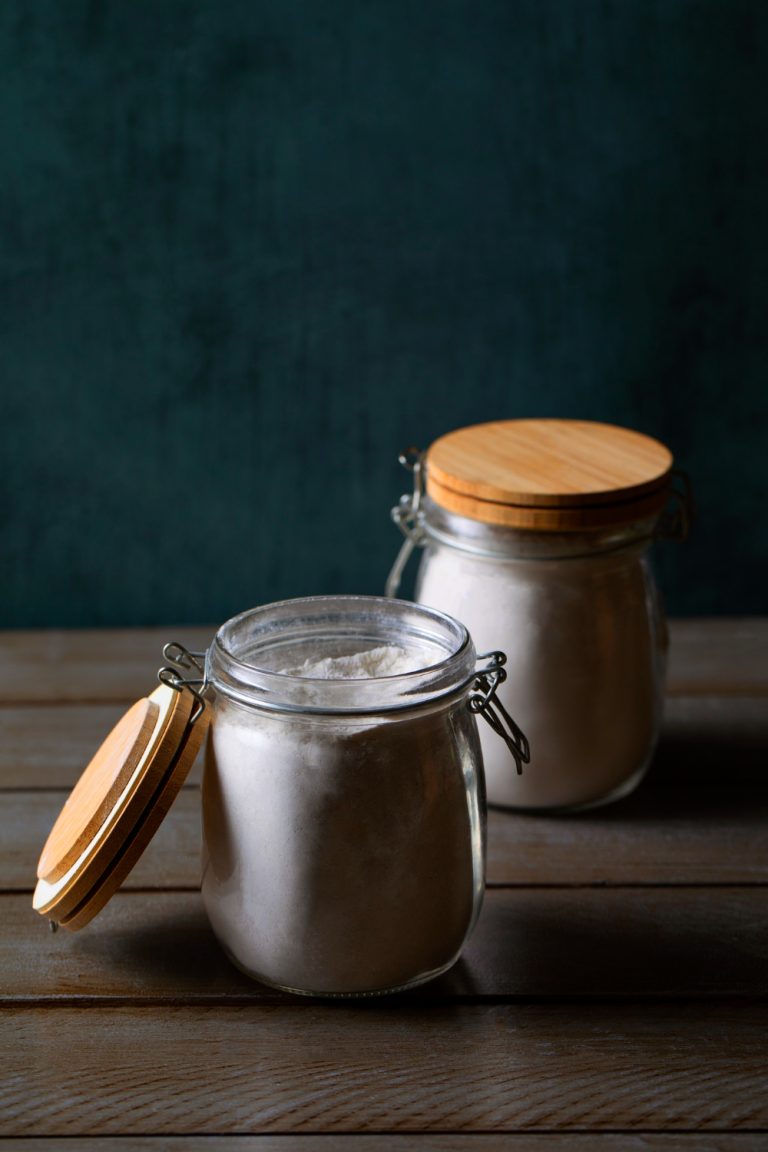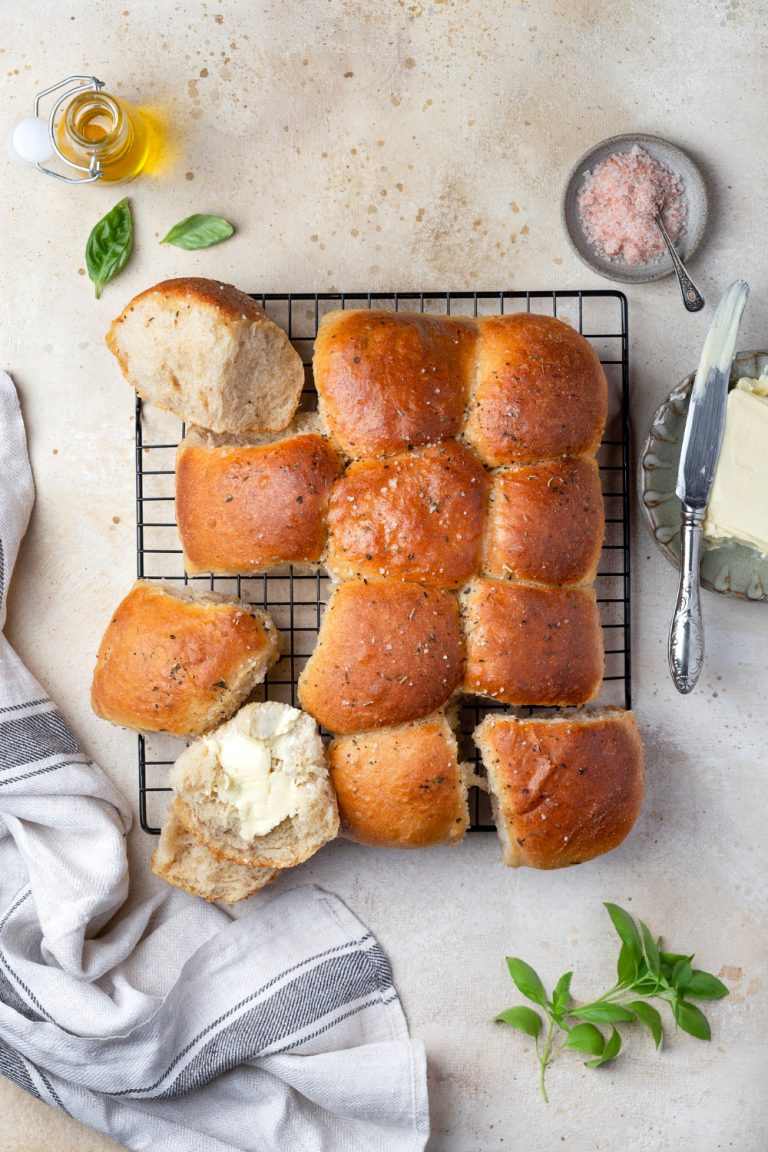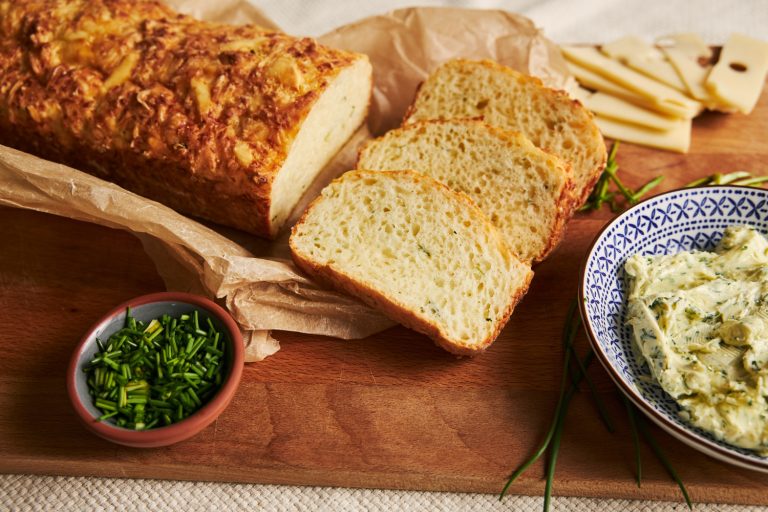How to Master Sustainable Baking with Sourdough at Home
Home bakers are increasingly drawn to green practices that help them create delicious bread. Sourdough baking leads this movement and combines traditional methods with eco-friendly approaches. Natural fermentation processes and minimal commercial ingredients make sourdough a perfect choice for environmentally conscious bakers.
This piece explores everything in mastering sourdough baking while following green practices. You will learn about starter culture creation and maintenance, wild yeasts, fermentation processes, and energy-efficient baking techniques. The content also shows you how to source local ingredients, reduce waste, and expand your sourdough skills beyond simple bread recipes.
Getting Started with Sourdough
The sourdough baking experience starts with a crucial understanding of its fundamental component: the starter culture. A living mixture of flour, water, and natural yeast creates the base for every sourdough creation and represents the essence of green baking practices.
Creating Your Starter
Each sourdough starter becomes unique as it captures wild yeasts from your local environment. You will need:
- Combine 4 ounces all-purpose flour (¾ cup plus two tablespoons) with 4 ounces water (½ cup)
- Place the mixture in a clean container and maintain temperature at 70-75°F
- Add equal parts flour and water each day for 4 days
- Remove half the mixture before adding fresh ingredients on day 5
- Add fresh ingredients for 2-3 more days until you see active bubbling
Feeding and Maintaining Your Starter
Your starter’s maintenance schedule depends on how often you bake and where you store it. Counter storage needs feeding every 12-24 hours using equal parts flour and water. Refrigerated starters need weekly feeding and can last up to two months unfed, though regular maintenance yields better results.
Troubleshooting Common Issues
These starter challenges and solutions will help you succeed:
| Issue | Solution |
|---|---|
| Gray liquid on top | Normal “hooch” – stir back in and feed |
| No bubbles after day 4 | Move to a warmer location |
| Orange/pink streaks | Discard and start over |
| Thick consistency | Add water until reaching pancake batter texture |
Your starter shows readiness to bake when it doubles in volume within 4 hours of feeding or passes the “float test.” Successful bakers watch their starter’s behavior and adjust feeding schedules based on temperature, flour type, and the local environment. This knowledge helps create a green baking routine arranged with natural fermentation processes.
Mastering the Art of Sourdough Baking
Sourdough baking delicately balances science and intuition. Bakers become skilled at this craft when they understand that a perfect loaf depends on three essential elements: fermentation control, dough handling, and baking technique.
Understanding Fermentation
Sourdough fermentation thrives best between 72-78°F (22-26°C). Wild yeasts and bacteria create magic at these temperatures and build flavor and structure. Temperature control allows bakers to adjust fermentation rates:
| Temperature | Fermentation Speed | Flavor Development |
|---|---|---|
| 65-70°F | Slow | Complex, tangy |
| 70-75°F | Moderate | Balanced |
| 75-80°F | Fast | Mild |
Kneading and Shaping Techniques
Good dough handling creates gluten structure and builds the foundation that leads to an open crumb. These techniques work best:
- Stretch and fold: A gentle approach that builds strength and keeps gas bubbles intact
- Coil folding: The quickest way to handle high hydration doughs
- Lamination: This builds layers and strengthens gluten during early bulk fermentation
During final shaping, bakers must create surface tension without removing gas from the dough. Beginners will find the cinching method easier to master, while the advanced stitching technique gives experienced bakers maximum structure.
Baking Methods for Perfect Crust
A perfect artisanal crust needs steam during the original baking phase. Home bakers usually create this effect with a Dutch oven or covered baking vessel. The baking process happens in three distinct phases:
- Original high-heat bake (450°F/230°C) with steam for 20 minutes
- Remove the lid to develop dry heat
- Final browning phase at a slightly lower temperature
Your dough’s internal temperature should reach at least 200°F (93°C) before it cools. A properly scored dough expands in a controlled way and creates the characteristic “ear” that shows a well-crafted sourdough loaf.
Sustainable Practices in Sourdough Baking
Eco-friendly sourdough baking goes beyond simple techniques and covers thoughtful ingredient choices, waste reduction, and the quickest ways to save energy. These practices benefit the environment while significantly improving the final product’s quality and character.
Using Local and Organic Ingredients
Thoughtful ingredient sourcing creates the foundation for environmentally responsible baking. Local heirloom varieties of non-dwarf wheat have nutritional benefits, including higher B vitamins, iron, copper, zinc, and magnesium levels. Harvard School of Public Health research shows that freshly milled whole wheat contains phytochemicals and antioxidants that help prevent diseases. Bakers need cold-processed, unbromated, and unbleached flour from their local community.
Reducing Food Waste with Discard Recipes
Sourdough discard isn’t just waste – it offers many ways to get creative in the kitchen. Clever use of discard can substantially reduce a baker’s carbon footprint. Food waste makes up 21% of the US waste stream, with good reason. Here’s how you can put discard to good use:
- Flat foods: crackers, tortillas, and pancakes
- Enriched goods: banana bread, brownies, and pastries
- Storage solutions: refrigeration to slow fermentation or freezing to preserve longer
Energy-Efficient Baking Techniques
Modern sourdough baking uses energy-saving methods without compromising quality. The cold start method has shown remarkable results:
| Baking Method | Energy Usage | Time Required |
|---|---|---|
| Traditional | 100 minutes | Full pre-heat |
| Cold Start | 50 minutes | No pre-heat |
Bakers can save energy through batch baking, leftover oven heat, and proper insulation techniques. Smartly organizing baking sessions and planning ahead for multiple loaves also helps reduce the baker’s carbon footprint.
To achieve better results, bakers should control waste throughout the process. Bowl scrapers help manage ingredients better, while minimal flour for dusting and water spray bottles improve dough handling. These techniques create less waste and deliver consistent, high-quality results.
Expanding Your Sourdough Repertoire
Sourdough’s versatility extends far beyond the reach and influence of traditional bread making, giving bakers countless opportunities to explore their creativity in the kitchen. By understanding fermentation principles, bakers can revolutionize their starter culture into various delicious creations.
Beyond Bread: Pizzas, Pastries, and More
Sourdough’s natural fermentation creates exceptional pizza crusts with complex flavors and perfect texture. The high-hydration technique results in pizzas with distinctive bubbled edges and crispy bases. Bakers can add their starter to create delicious pastries such as:
- Buttery croissants with deeper flavor profiles
- Tender Danish pastries that stay fresh naturally
- Rustic tarts that are easier to digest
- Flaky biscuits that last longer on the shelf
Experimenting with Different Flours
Each type of flour types brings unique flavor profiles and textures to sourdough baking:
| Flour Type | Characteristics | Best Applications |
|---|---|---|
| Rye | Earthy, dense | Hearty breads, crackers |
| Spelt | Nutty, light | Pastries, pizza dough |
| Einkorn | Sweet, golden | Tender cakes, cookies |
| Kamut | Rich, buttery | Enriched doughs |
Seasonal Variations and Add-ins
Seasonal ingredients boost sourdough’s versatility while supporting eco-friendly baking. Spring and summer bring fresh herbs and edible flowers to your bread, while autumn and winter are perfect for heartier ingredients like nuts and dried fruits. Here are some popular add-in combinations:
Mediterranean Blend
- Olives and fresh rosemary
- Sun-dried tomatoes
- Parmesan cheese
Harvest Mix
- Toasted walnuts
- Dried cranberries
- Local honey
Your success with add-ins depends on proper hydration levels. To achieve proper fermentation and structure, add-ins should make up no more than 20% of the total dough volume. You’ll need to adjust the hydration of your base recipe for wet ingredients, and you can mix dry additions during the stretch-and-fold process.
Bakers should track their add-ins’ moisture content and tweak base recipes. This careful attention will give you consistent quality while you learn the immense possibilities of sourdough baking.
Conclusion
Traditional sourdough baking brings together old-world craftsmanship and environmental responsibility. Becoming skilled at this ancient practice needs a good grasp of starter maintenance, fermentation control, and proper technique. Green practices like using local ingredients and reducing waste make it even more environmentally friendly. All these elements combine smoothly to help bakers create exceptional bread while reducing their environmental footprint through reduced commercial yeast usage, quick baking methods, and creative ways to use discards.
Sourdough baking opens up a world of culinary creativity. Artisanal loaves, pizzas, and pastries bring unique flavors that change with local ingredients and seasons. Home bakers and restaurant owners can improve their bread and pizza with an authentic artisanal sourdough starter from The Yeast We Can Do. Their starter adds the perfect tangy flavor and creates that signature crust – just email john@theyeastwecando.com to get your premium starter. This steadfast dedication to green baking creates better-baked goods and helps build a more environmentally aware food culture. It shows how traditional methods often solve modern sustainability challenges.
FAQs
How do bakers maintain their sourdough starters when not baking regularly?
Bakers typically store their sourdough starters in the refrigerator when they do not plan to bake for several days or weeks. To ensure the starter remains active, it is advisable to feed it with equal parts of flour, water, and starter before sealing it with an airtight lid and placing it in the fridge.
Is sourdough considered a more sustainable type of bread?
Yes, sourdough bread is recognized for its sustainability. The natural fermentation process of sourdough eliminates the need for commercial yeast, which often contains ingredients derived from petrochemicals. Consequently, sourdough is a more eco-friendly option for bread making.
How is sourdough bread produced on a commercial scale?
Commercially, sourdough bread is sometimes produced using the Chorleywood bread process, developed in 1961. This method includes shortcuts like injecting water with carbon dioxide to form bubbles in the bread’s crumb, a process that traditionally occurs during the natural proofing stage of authentic sourdough.
Do the probiotics in sourdough bread remain active after baking?
While the probiotics in sourdough do not survive the high baking temperatures, the lactic acid bacteria produced during fermentation remain. These bacteria offer health benefits, including antioxidant properties that help protect the body against illnesses.
